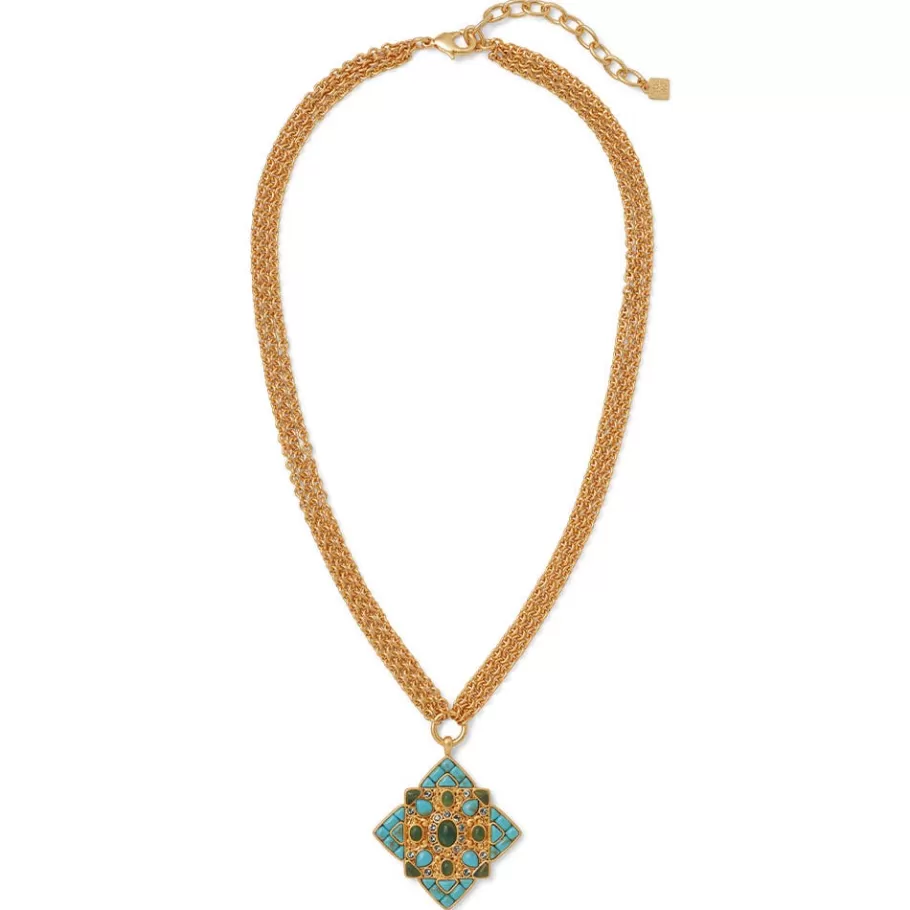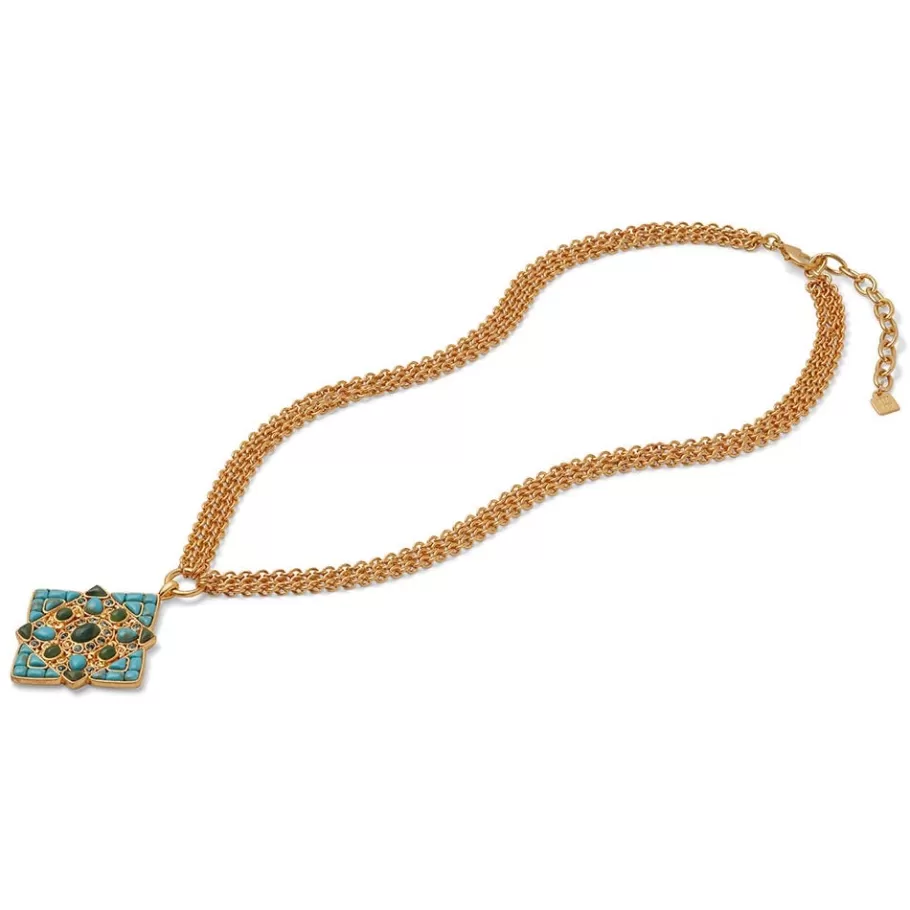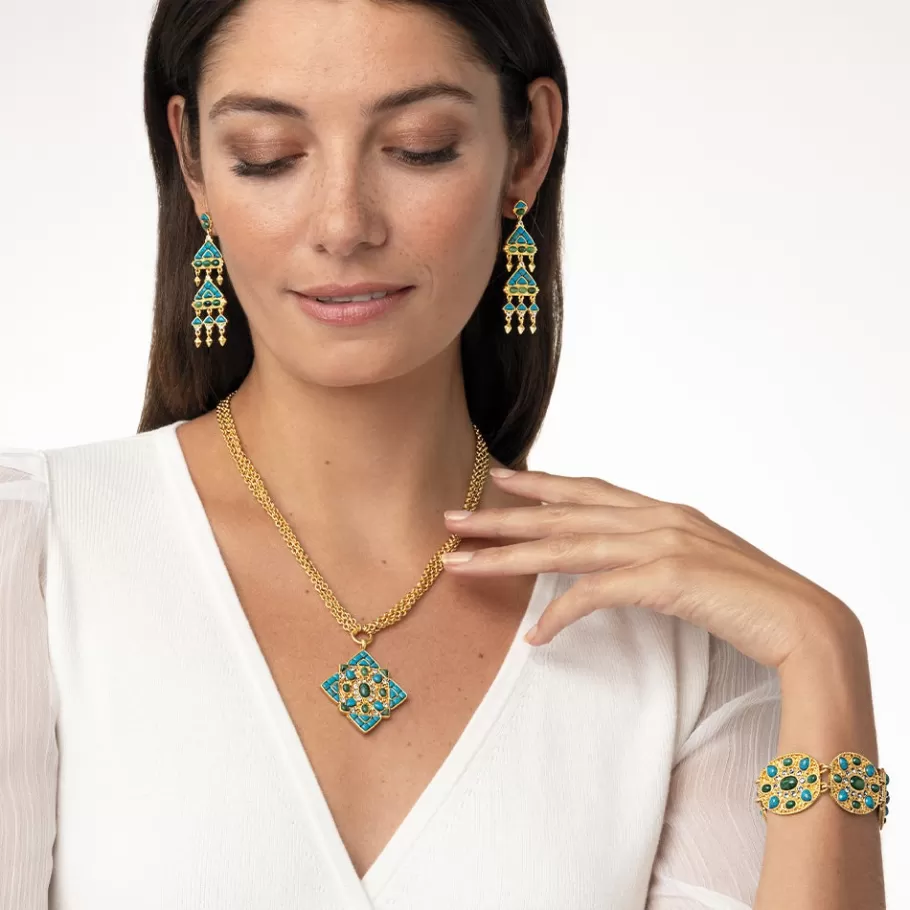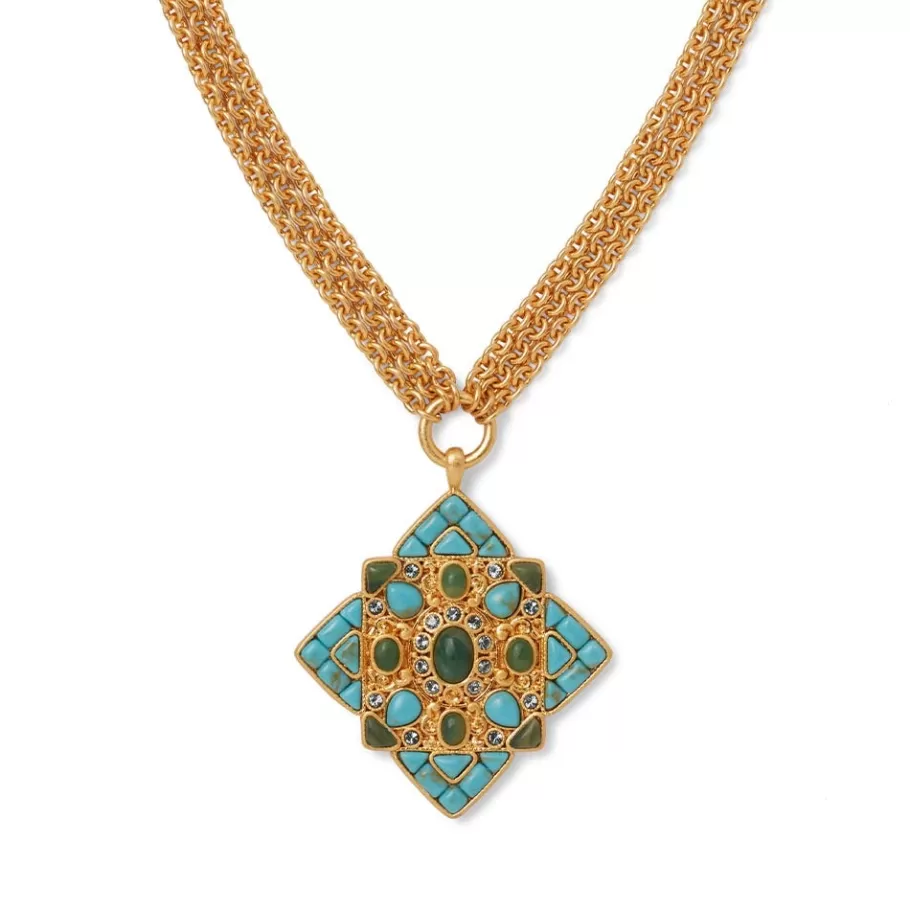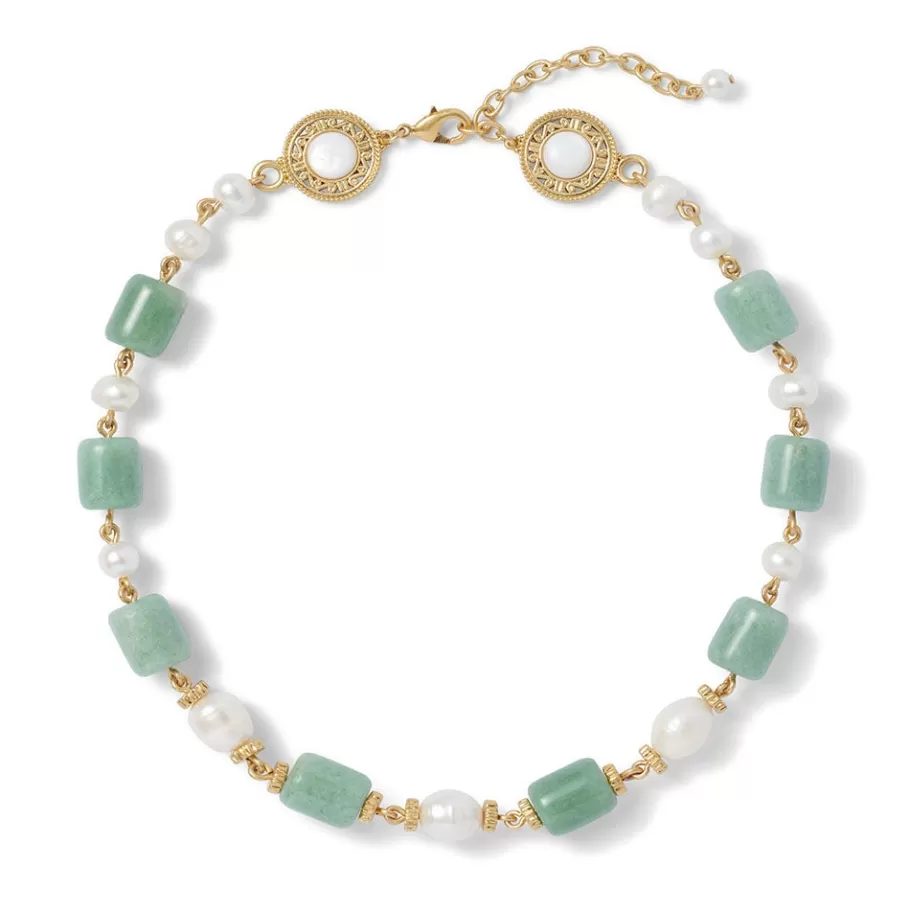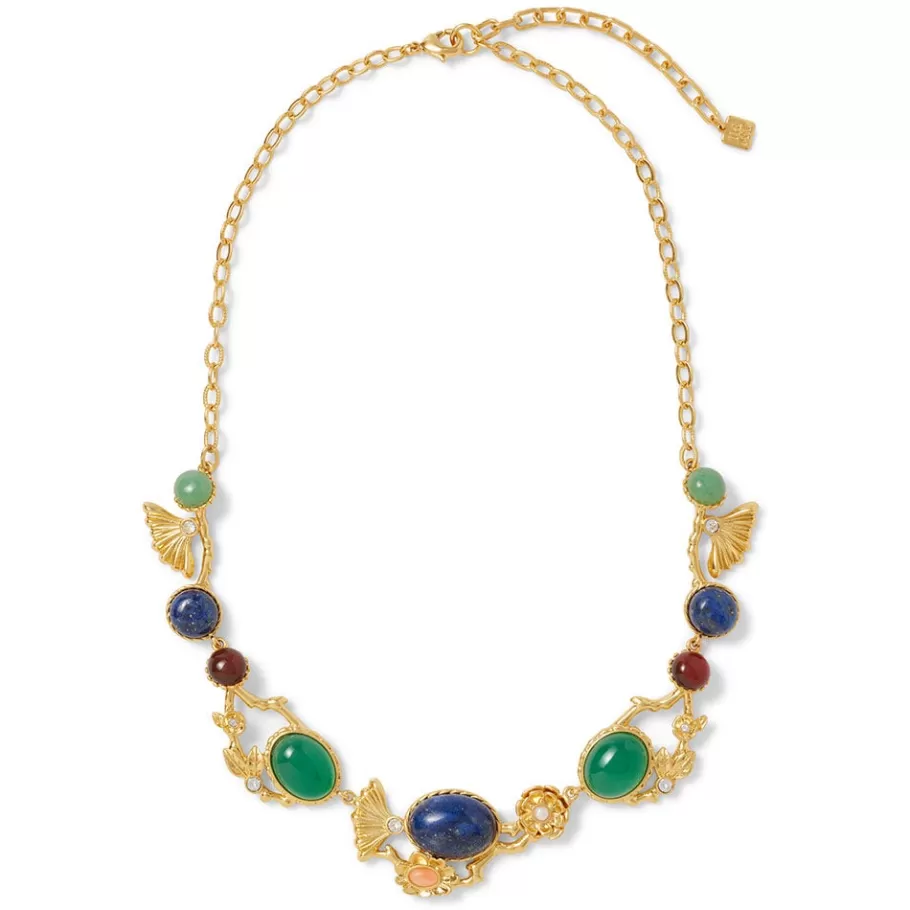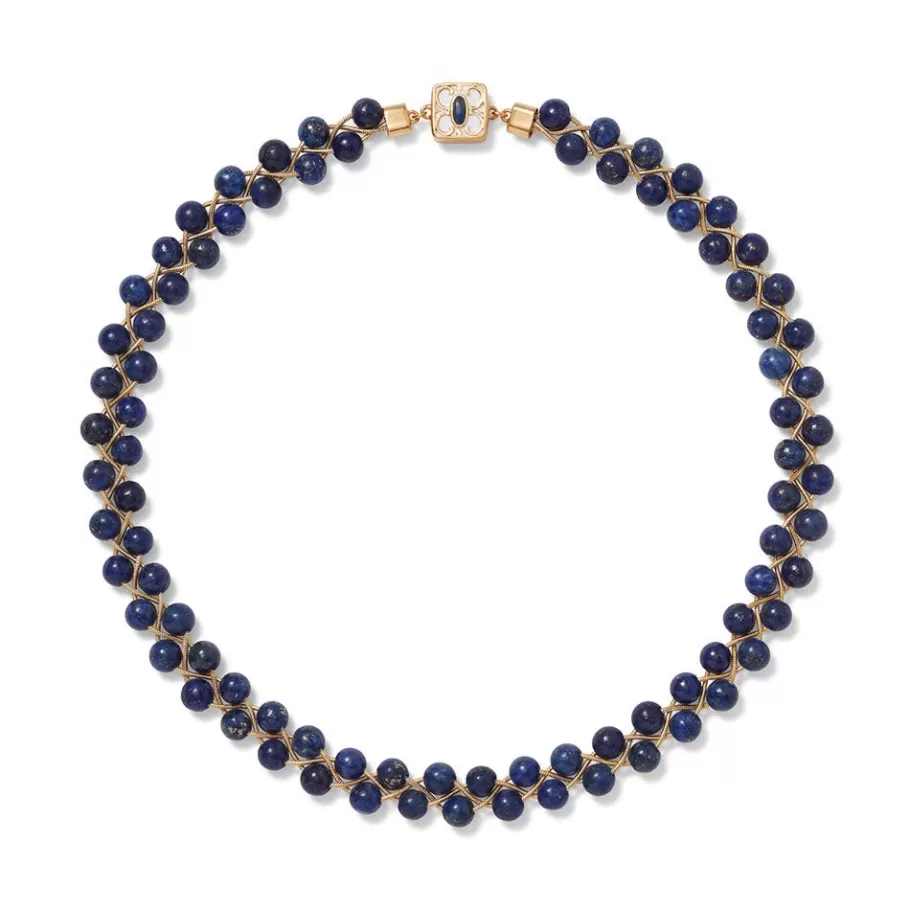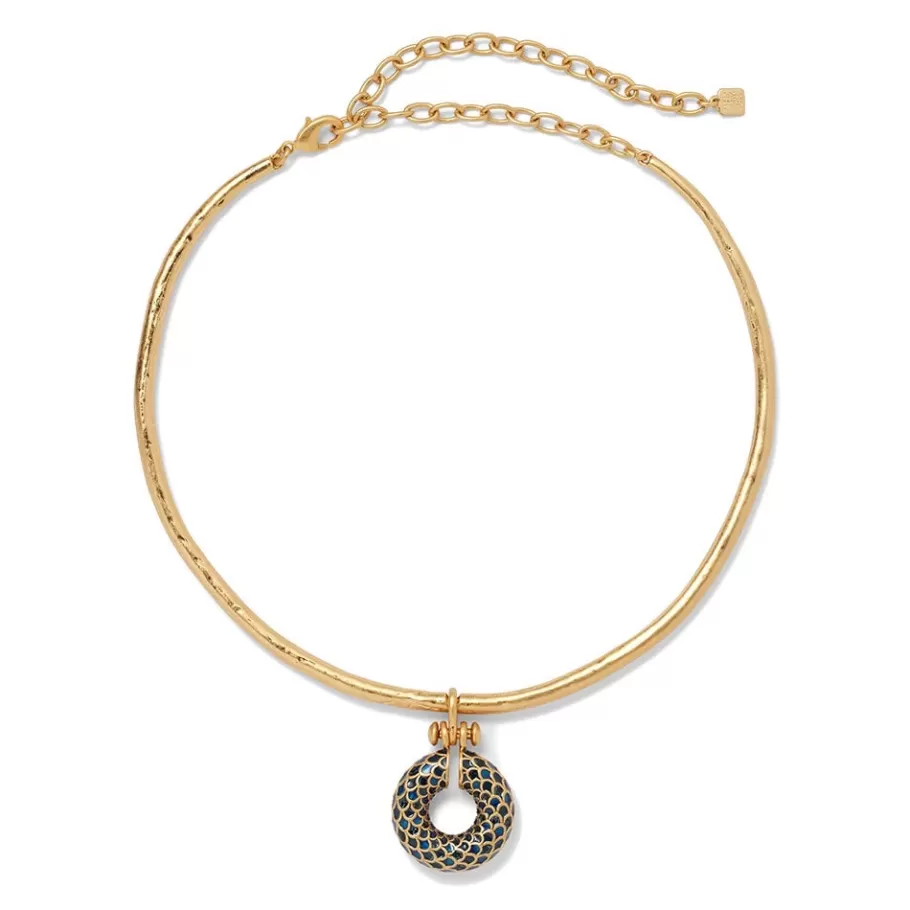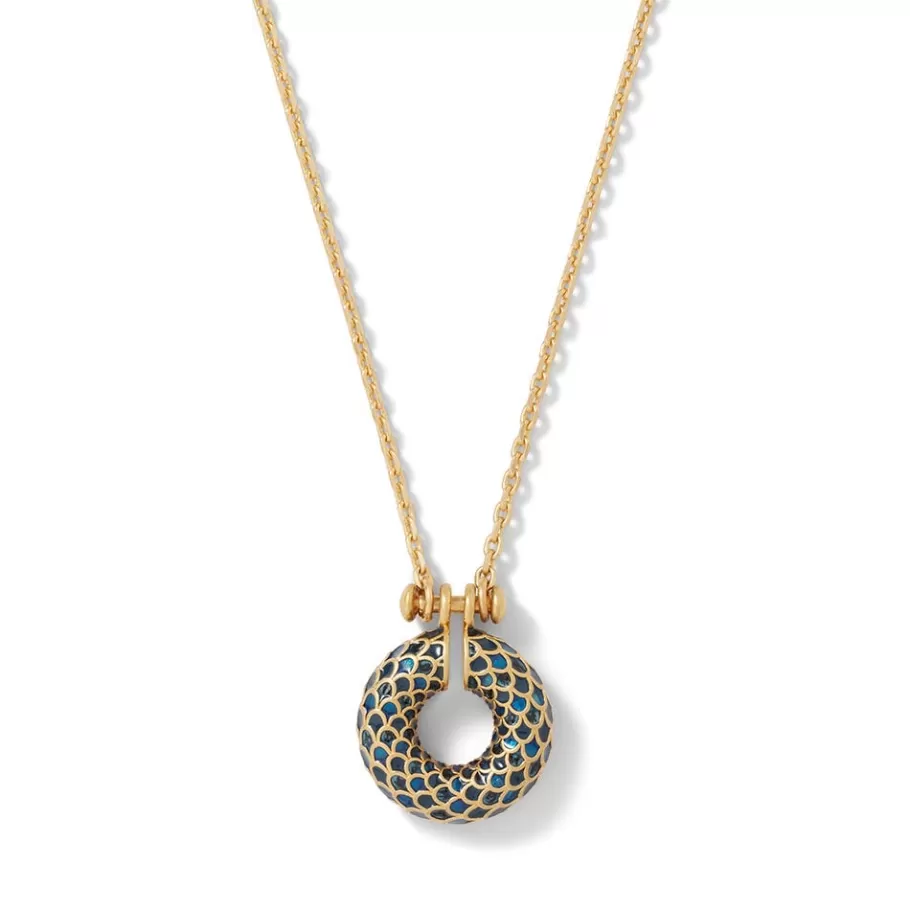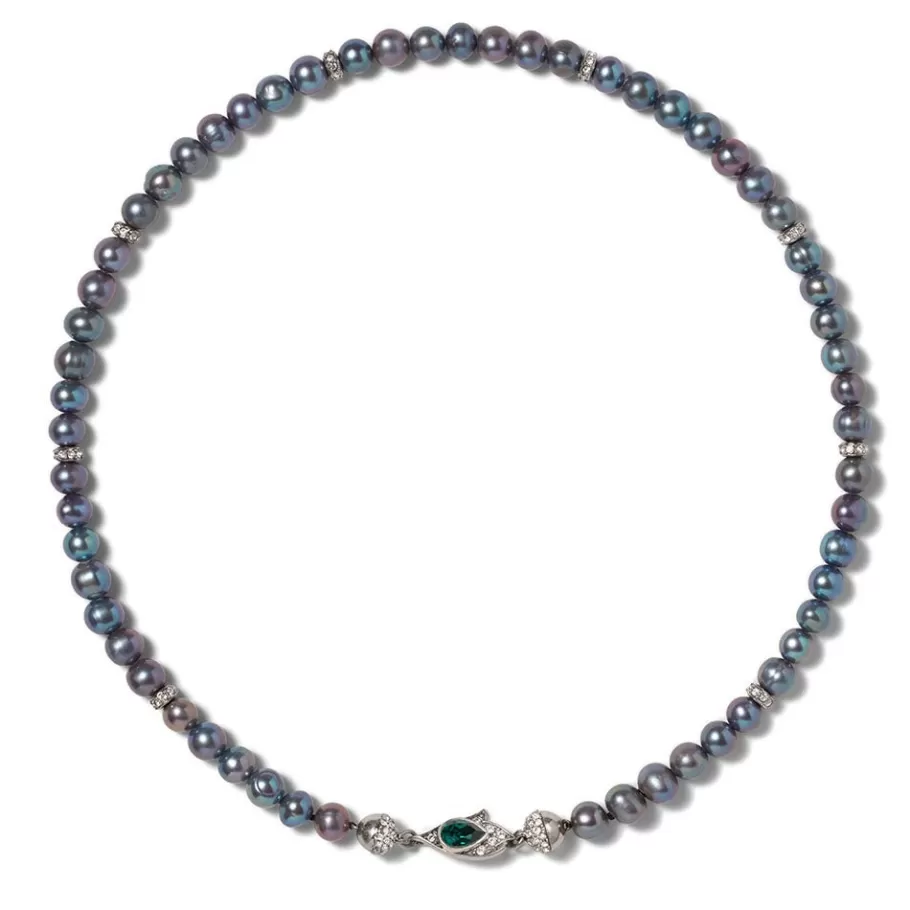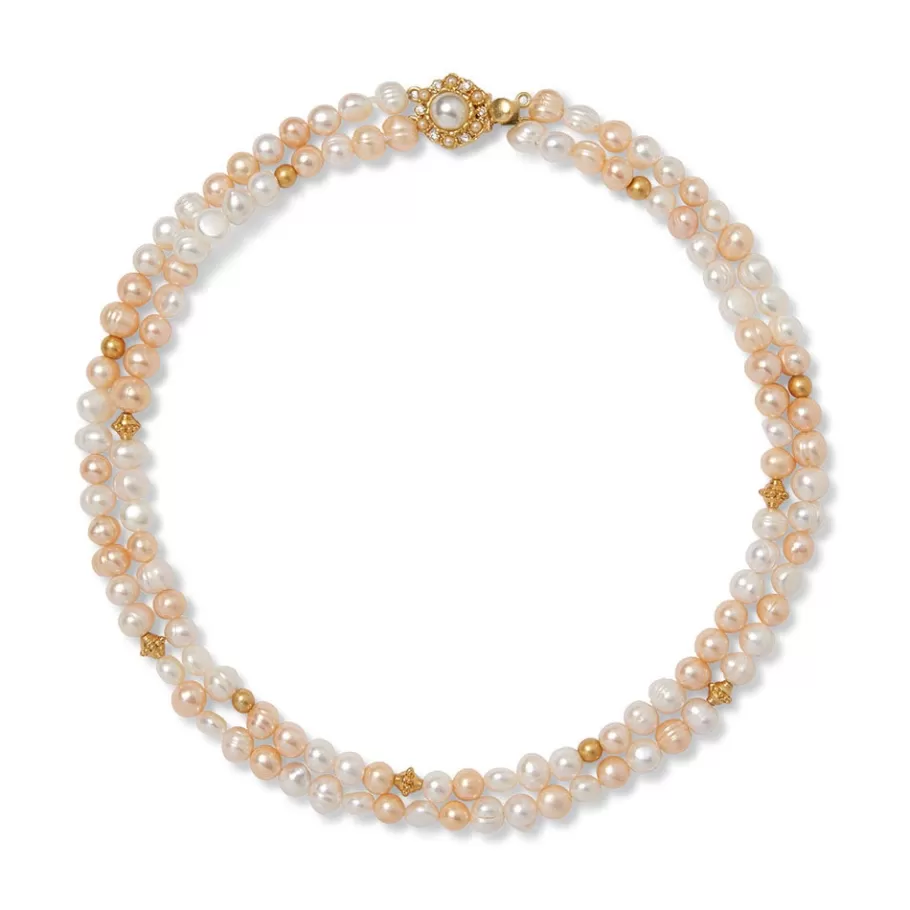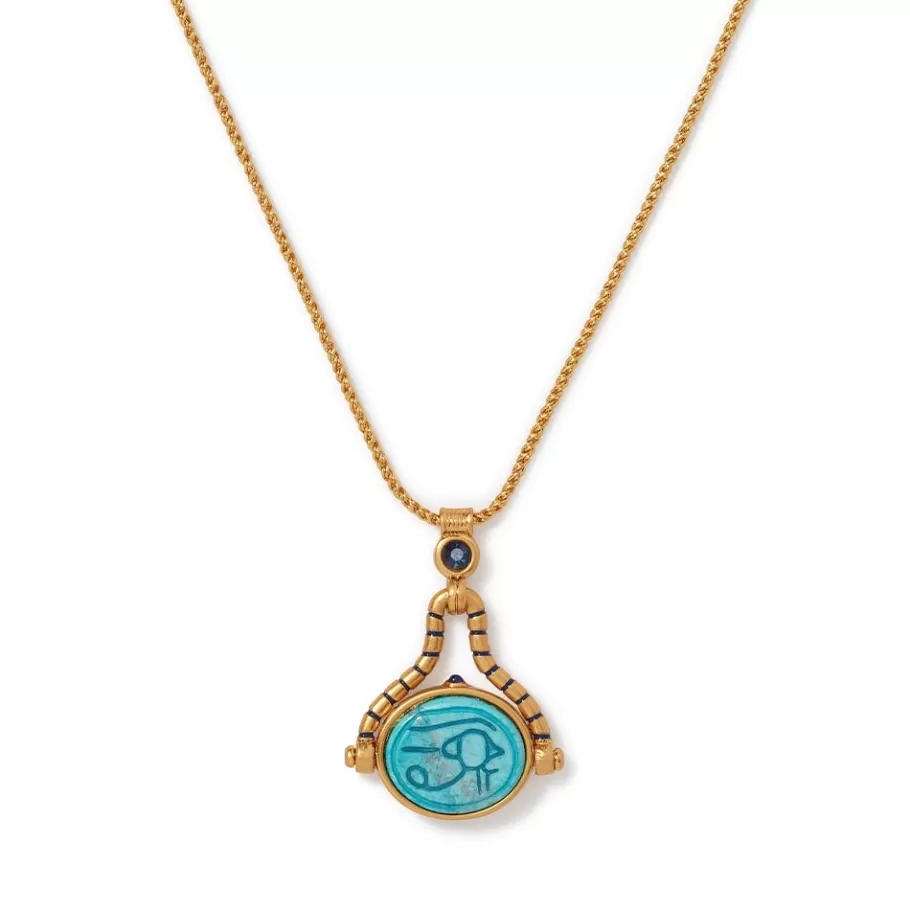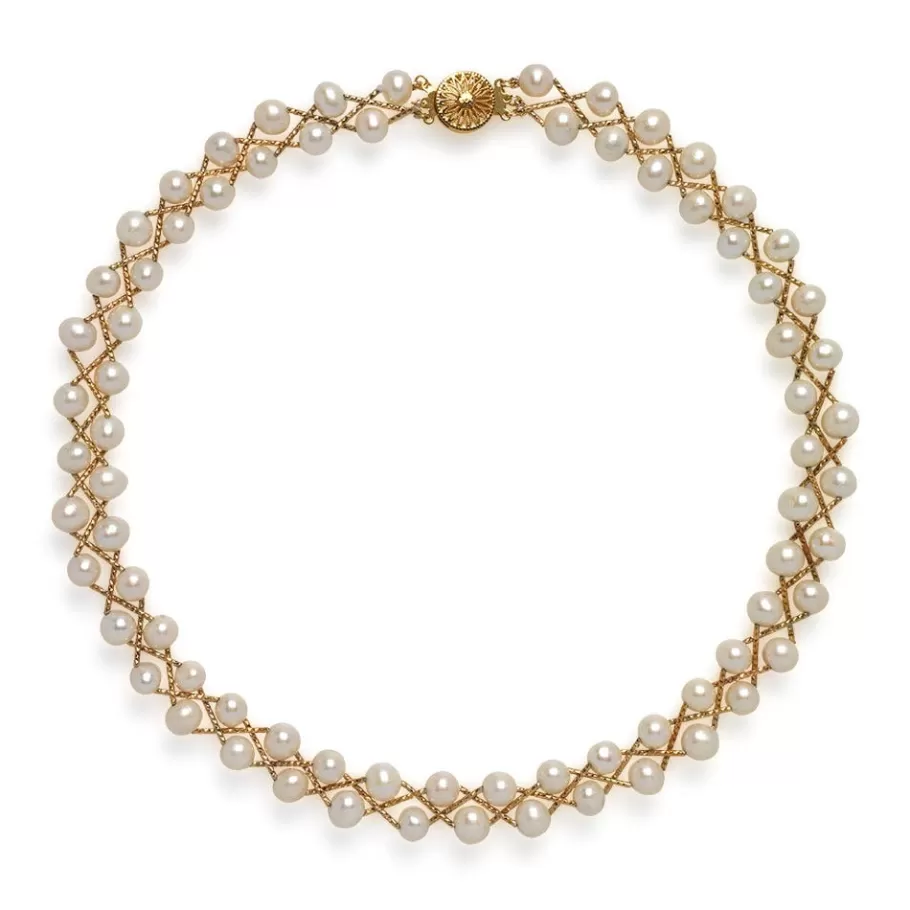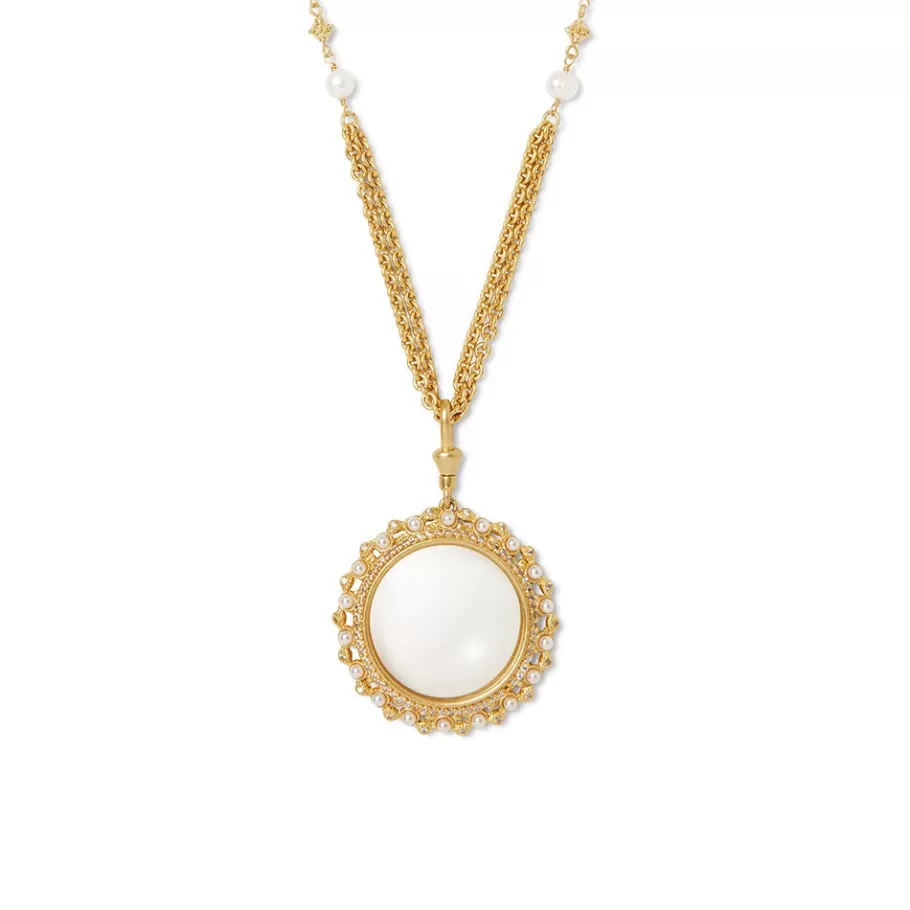Art jewelry inspired by The Met collection.
The late 19th–early 20th-century Tibetan amulet box, or
ga’u
, that inspired this bejeweled pendant would have been worn around the neck to protect the wearer. Its form, comprising two intersecting squares that symbolize crossed
vajras
, or thunderbolts, suggests the stability of Buddhism, while its striking stone embellishments represent the crystalline nature of the heavens. Amulet boxes typically contained written or printed texts consecrated by monks, and often included pieces of cloth from an important lama’s robes. The eye-catching example in The Met collection belonged to a larger jewelry ensemble owned by a noblewoman.
We’re pleased to present this jewelry in celebration of
Mandalas: Mapping the Buddhist Art of Tibet
. This…See More
- 18K gold plate
- Reconstituted turquoise
- Green jade
- Made with Swarovski® crystals
- Lobster-claw closure
- Chain: 18”L with 2” extender
- Drop: 2”L x 1 1/2”W
- Clean with a damp cloth and dry with a soft, clean cloth

